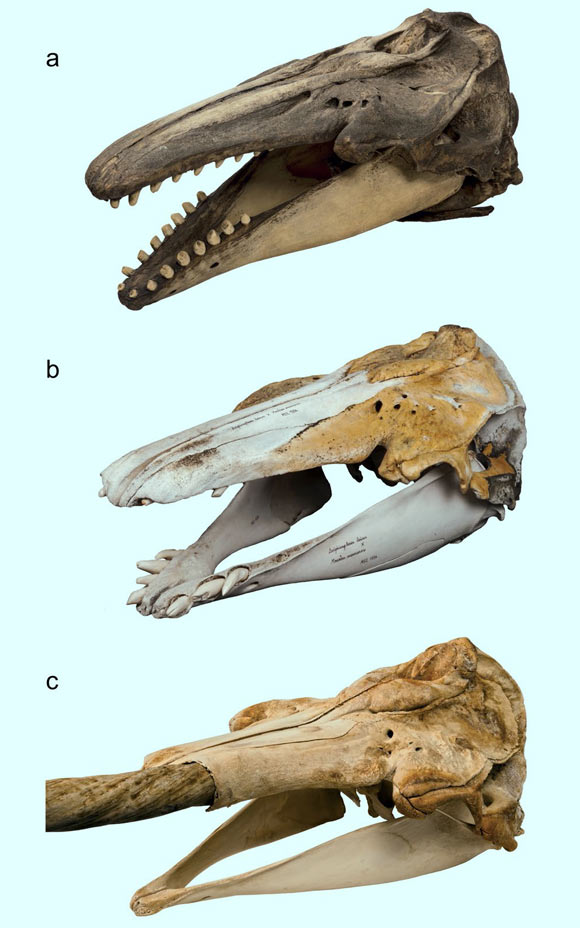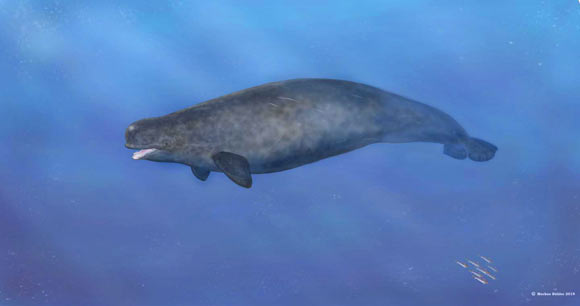Narwhals (Monodon monoceros) and beluga whales (Delphinapterus leucas) are medium-sized toothed whales and the sole representatives of the Monodontidae family. They are the only toothed whales endemic to the Arctic region. While they are each other’s closest relatives and roughly equal in size, these two species differ in their morphology and behavior. Now, a series of DNA and stable isotope analyses of an anomalous toothed whale skull has allowed researchers to confirm that the two species can interbreed successfully.
In 1990, a skull from an unusual toothed whale was found in West Greenland and collected for the Natural History Museum of Denmark. From its unique morphology, the specimen was hypothesized to be a beluga-narwhal hybrid.
“As far as we know, this is the first and only evidence in the world that these two Arctic whale species can interbreed,” said Dr. Eline Lorenzen, curator at the Natural History Museum of Denmark at the University of Copenhagen.
“Based on the intermediate shape of the skull and teeth, it was suggested that the specimen might be a narwhal-beluga hybrid, but this could not be confirmed. Now we provide the data that confirm that yes — it is indeed a hybrid.”
Dr. Lorenzen and colleagues determined that the skull belonged to a male, first-generation hybrid between a female narwhal and male beluga.
It was considerably larger than that of a typical narwhal or beluga. But the teeth were markedly different.
Whereas narwhals have only one or rarely two long spiraling tusks, belugas have a set of uniform conical teeth that are aligned in straight rows. The hybrid skull has a set of long, spiraling and pointed teeth, that are angled horizontally.

Skull morphology of beluga (a), narwhal-beluga hybrid (b), and narwhal (c). Image credit: Mikkel Høegh Post.
“This whale has a bizarre set of teeth,” said Mikkel Skovrind, a PhD student at the University of Copenhagen.
“The isotope analysis allowed us to determine that the animal’s diet was entirely different than that of a narwhal or beluga — and it is possible that its teeth influenced its foraging strategy.”
“Whereas the other two species fed in the water column, the hybrid was a bottom dweller.”
The researchers do not know what prompted the two species to mate.
“We have analyzed the nuclear genomes of a narwhal and a beluga, but see no evidence of interbreeding for at least the past 1.25 million years of their evolutionary histories,” Dr. Lorenzen said.
“So, interbreeding between the species appears to be either a very rare or a new occurrence. To my knowledge, it has not been observed or recorded before.”
The findings were published June 20, 2019 in the journal Scientific Reports.
_____
Mikkel Skovrind et al. 2019. Hybridization between two high Arctic cetaceans confirmed by genomic analysis. Scientific Reports 9, article number: 7729; doi: 10.1038/s41598-019-44038-0








